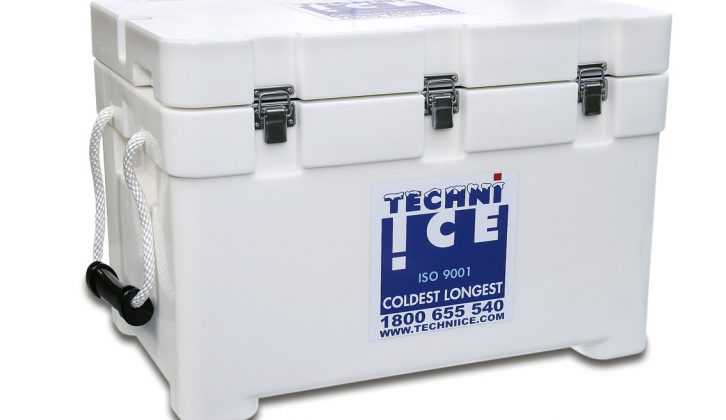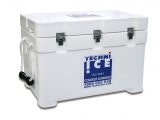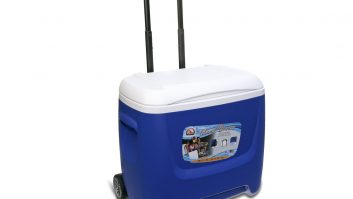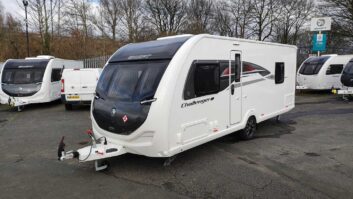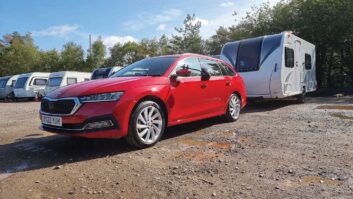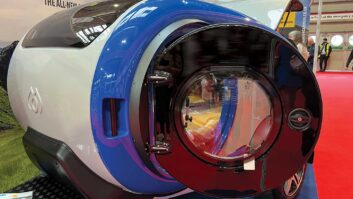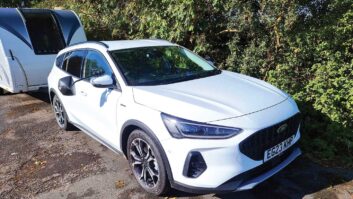Verdict
In the Practical Caravan Techniice Signature review, this 45-litre passive coolbox proved to be tough and extremely good at keeping items chilled, thus it received a four-star rating. But at over £200 and being quite large, it might be a step too far for some on their caravan holidays.
Pros
It achieved the best thermal performance of any coolbox tested
Cons
It is rather expensive
It’s pretty big
Practical Caravan reviewed the Techniice Signature, but at £215, can you really justify the cost when buying kit for your caravan holidays? After all, there are plenty of cheaper options on the market. And anyway, with powered coolboxes cheaper than ever, why go to the hassle of freezing ice packs the night before to fill your passive coolbox, when you could just plug a cooler into a 12V socket whenever you need to chill items?
The truth is that many powered coolboxes don’t perform as well as they promise – especially if you’re using them in warmer climates, for example when away on your summer holidays, especially on the Continent. In addition, once unplugged, they can heat up quite quickly. However, advances in plastic moulding, insulation and ice pack technology mean that there are many so-called super-coolboxes on the market, high performing passive coolboxes (often developed in the USA and Australia) that, although hardly cheap, will keep food and drink chilled for days – or even weeks – without you needing to add more ice packs.
That’s very impressive, so we needed to devise a suitably rigorous test to challenge the manufacturers’ claims during the Practical Caravan group passive coolbox test. First, we tested the thermal abilities of each passive coolbox on test. We did this by opening them and letting them reach an ambient temperature of 25˚C, then loading them to 5% of their capacity with ice chilled to -12˚C, closing them and putting them in a room with a constant temperature of 27˚C for eight hours; their internal temperatures were monitored throughout.
Other factors were considered as well. These included their build quality, how easy they were to carry, their price, if they’re lockable (good for keeping alcohol from children), if they’re deep enough to store tall bottles upright, if they have drainage bungs (so ice melt can be removed without raising the internal temperature) and if they have good feet (decently sized feet leave a gap for cool air to pass between the base of the box and the warm ground). But that’s not all – coolboxes are sometimes used as impromptu seats, so this was taken into account, too. So, how did the Techniice Signature fare in the Practical Caravan review?
Techniice took three years to develop the Signature range, which it claims is one of the most advanced coolboxes available. It’s hard not to be impressed by the result: 70mm-thick walls and a 90mm-thick lid promote what is easily the best thermal performance in our test: a low of 10˚C and an average of 11.1˚C. Every other feature is taken to the ultimate extreme. The lid, for instance, has two seals: the rubber strip found on most top-end boxes and one that resembles a fridge door’s gasket. Even the drain bung is insulated and it’s a whopping 60mm in diameter, wide enough for large ice chunks to drain out. The price, which includes post and packing from Australia, is a drawback, as is its size (66cm x 43cm x 46cm). Before buying, ask about import duties — you’ll have to pay them yourself. We gave this product a strong four-star rating.
In addition, you can supercharge your coolbox using Techniice sheets. These are tough, gel-filled bags that make it easy to distribute the cold throughout the coolbox. It’s recommended that you place one for every seven litres of storage volume. Three of the reusable sheets cost £25. And, of course, you can use these in passive coolboxes of any make.
In the Practical Caravan passive coolbox group test, the Waeco Cool-Ice was our Editor’s choice, crowned the overall winner. The very affordable Igloo Sportsman received a four-star rating, as did the colourful Icey-Tek Cube Box. The Igloo Island Breeze might have scored just three out of five, but was one of the most portable we tested, while the Argos coolbox got a one-star rating.
Every feature is taken to the ultimate extreme
Technical Specifications
| Capacity | 45 litres |
| External dimensions (cm) | 66 x 43 x 46 |
